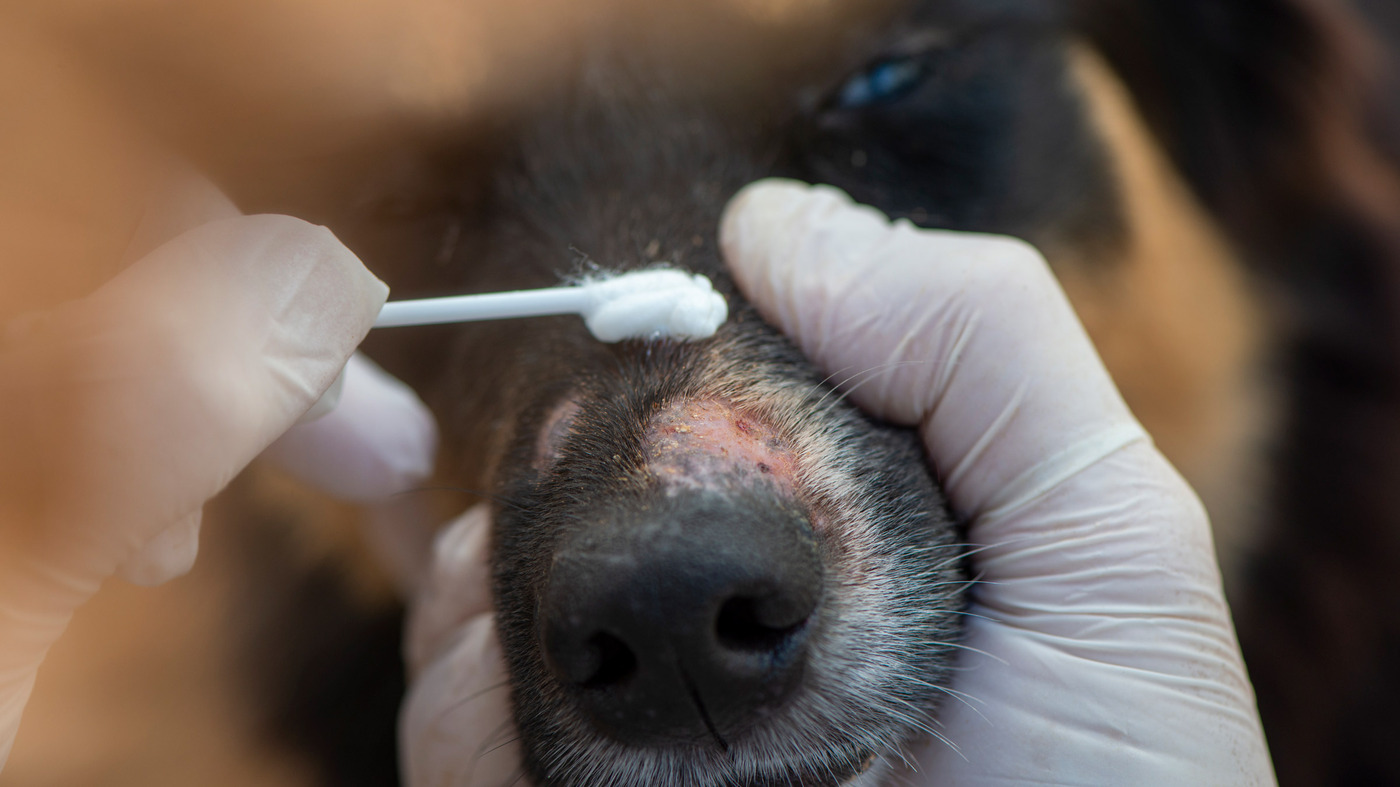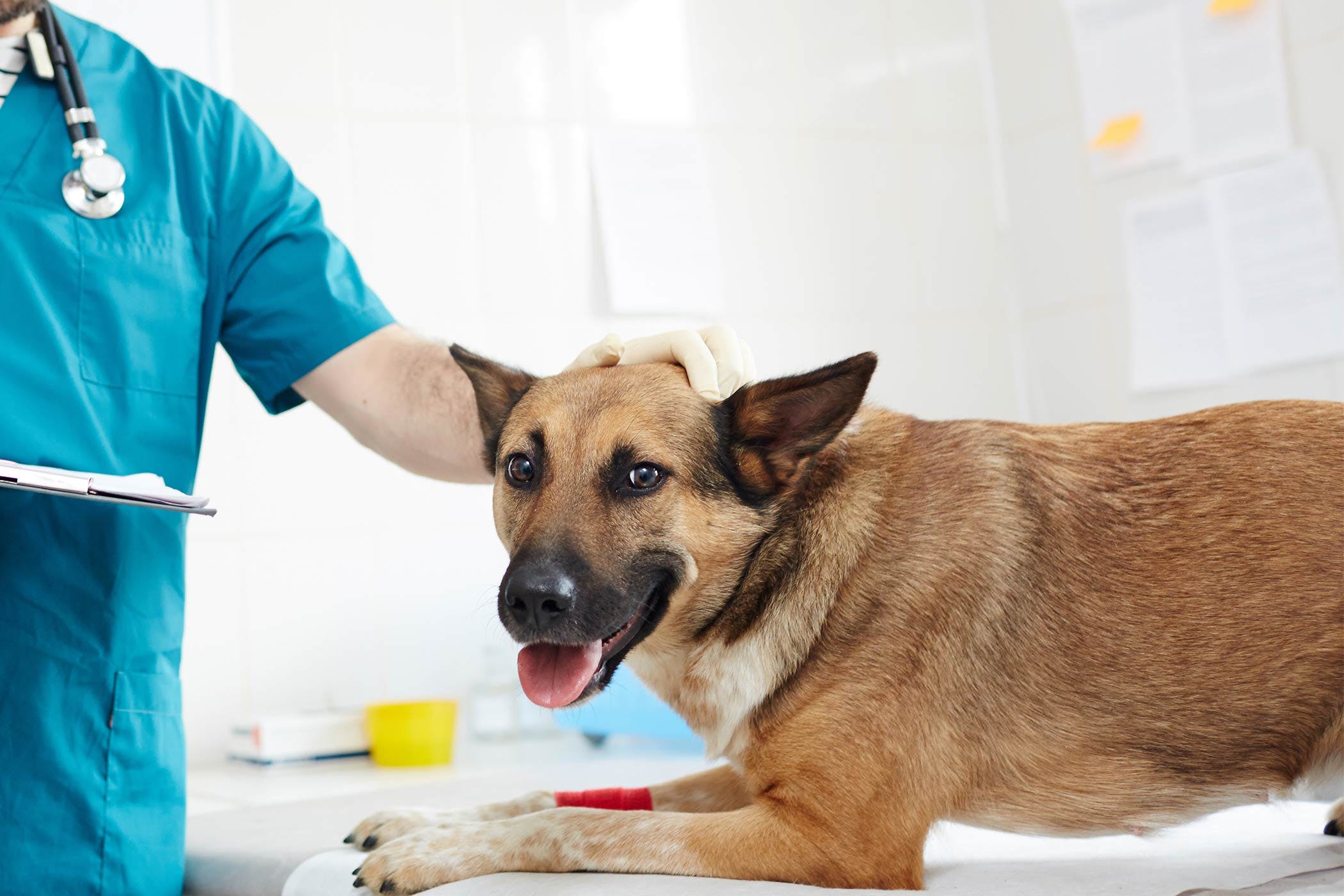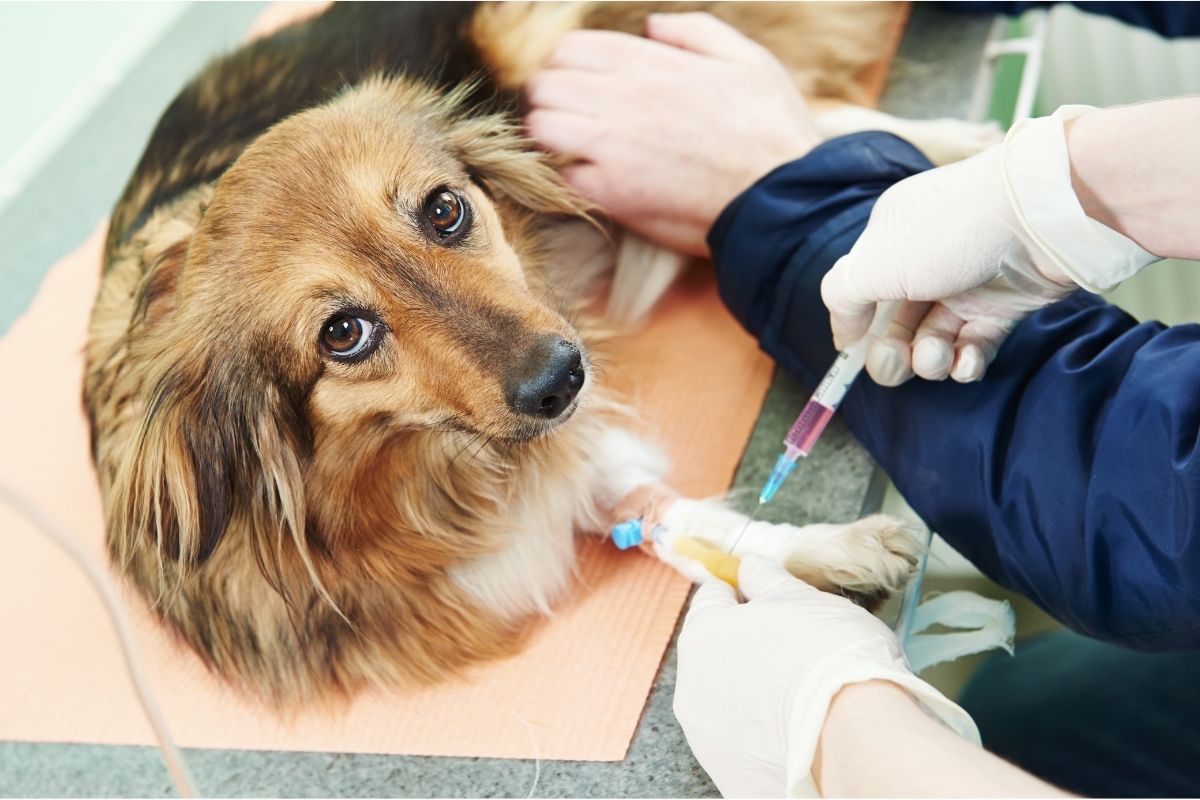Home>Health & Wellness>Common Health Issues>Cryptosporidium Parasite In Dogs: How To Cure


Common Health Issues
Cryptosporidium Parasite In Dogs: How To Cure
Published: February 8, 2024
Learn how to cure Cryptosporidium parasite in dogs and prevent common health issues with our expert tips and advice. Keep your furry friend healthy and happy!
(Many of the links in this article redirect to a specific reviewed product. Your purchase of these products through affiliate links helps to generate commission for Pawsomeoldies.com, at no extra cost. Learn more)
Table of Contents
Introduction
Cryptosporidium is a microscopic parasite that can affect the gastrointestinal tract of dogs, leading to a condition known as cryptosporidiosis. This parasite is a common cause of diarrhea in both humans and animals, and it can be particularly problematic for young puppies and dogs with weakened immune systems. Understanding the nature of cryptosporidium infection in dogs, including its symptoms, diagnosis, treatment, and prevention, is crucial for ensuring the well-being of our beloved canine companions.
Cryptosporidium parasites are transmitted through the ingestion of contaminated food, water, or feces. Once inside a dog's body, these parasites can cause inflammation and damage to the lining of the intestines, leading to diarrhea, dehydration, and other gastrointestinal issues. The resilient nature of cryptosporidium makes it challenging to eradicate, and it can persist in the environment for extended periods, posing a risk of re-infection.
As responsible pet owners, it is essential to be aware of the potential threat posed by cryptosporidium and take proactive measures to safeguard our dogs from this parasitic infection. By understanding the symptoms of cryptosporidium infection, seeking timely veterinary care, and implementing preventive strategies, we can minimize the risk of our furry friends falling victim to this troublesome parasite.
In the following sections, we will delve deeper into the intricacies of cryptosporidium infection in dogs, exploring the symptoms, diagnosis, treatment options, and preventive measures that can help mitigate the impact of this parasitic threat on our canine companions. Understanding the nuances of cryptosporidium infection is the first step toward ensuring the health and happiness of our beloved dogs.
Read more: How To Cure Blood Parasite In Dogs
Understanding Cryptosporidium Parasite in Dogs
Cryptosporidium is a genus of parasitic protozoans that can infect the gastrointestinal tract of dogs, causing a condition known as cryptosporidiosis. These microscopic parasites are members of the phylum Apicomplexa and are known for their ability to survive in the environment for extended periods, making them a persistent threat to canine health.
The transmission of cryptosporidium typically occurs through the ingestion of contaminated food, water, or feces. Once inside a dog's body, the parasites invade the cells lining the small intestine, leading to inflammation and damage. This can result in a range of gastrointestinal symptoms, with diarrhea being the most common and prominent manifestation of cryptosporidiosis in dogs.
One of the notable characteristics of cryptosporidium parasites is their resistance to many traditional disinfection methods, allowing them to persist in the environment and pose a risk of re-infection. This resilience makes cryptosporidium a challenging adversary, particularly for young puppies and dogs with weakened immune systems.
It's important to note that cryptosporidium can also affect humans, posing a potential zoonotic risk. Therefore, understanding and addressing cryptosporidium infection in dogs is not only crucial for the well-being of our canine companions but also for public health.
By gaining a deeper understanding of the nature of cryptosporidium parasites and their impact on dogs, pet owners can better appreciate the significance of preventive measures and timely veterinary intervention. Recognizing the potential sources of cryptosporidium contamination and being vigilant about hygiene and sanitation can help mitigate the risk of exposure for both dogs and their human caregivers.
In the subsequent sections, we will explore the symptoms, diagnosis, treatment options, and preventive strategies related to cryptosporidium infection in dogs, providing comprehensive insights to empower pet owners in safeguarding the health and happiness of their beloved canine companions.
Symptoms of Cryptosporidium Infection in Dogs
The symptoms of cryptosporidium infection in dogs can manifest as gastrointestinal distress, signaling the presence of this parasitic menace within the canine host. The most common and prominent indication of cryptosporidiosis is diarrhea, which may range from mild to severe and can be accompanied by other gastrointestinal issues. Dogs afflicted with cryptosporidium infection may experience frequent, watery diarrhea, often containing mucus or blood. This persistent diarrhea can lead to dehydration, lethargy, and a noticeable decline in overall well-being.
In addition to diarrhea, affected dogs may exhibit other gastrointestinal symptoms, including vomiting, abdominal pain, and a decreased appetite. The presence of these symptoms can cause discomfort and distress for the infected animals, impacting their quality of life and potentially leading to complications if left untreated.
Furthermore, cryptosporidium infection can weaken the immune system, making dogs more susceptible to other infections and illnesses. This can manifest as a general malaise, with affected dogs appearing lethargic, uninterested in activities they typically enjoy, and displaying a lack of energy and enthusiasm.
It is important to note that the severity and duration of symptoms can vary depending on the individual dog's immune response and overall health. Puppies and dogs with compromised immune systems are particularly vulnerable to the adverse effects of cryptosporidium infection, often exhibiting more severe symptoms and experiencing prolonged discomfort.
Observing these symptoms in a dog should prompt pet owners to seek veterinary care promptly. Timely diagnosis and intervention are crucial for managing cryptosporidium infection and alleviating the distress experienced by affected dogs. By recognizing the telltale signs of cryptosporidiosis, pet owners can take proactive steps to ensure the well-being of their canine companions and prevent the escalation of the infection's impact on their health.
Understanding the symptoms of cryptosporidium infection in dogs empowers pet owners to be vigilant and responsive to any signs of gastrointestinal distress in their furry friends. By remaining attentive to changes in their dog's behavior and health, pet owners can play a proactive role in safeguarding their beloved companions from the detrimental effects of cryptosporidium parasites.
Diagnosing Cryptosporidium Infection in Dogs
Diagnosing cryptosporidium infection in dogs requires a comprehensive approach that encompasses clinical evaluation, laboratory testing, and a thorough understanding of the potential sources of exposure. When a dog presents with symptoms indicative of gastrointestinal distress, including persistent diarrhea, vomiting, and lethargy, the veterinarian will conduct a detailed physical examination to assess the animal's overall health and well-being.
Laboratory analysis of fecal samples is a key component of diagnosing cryptosporidium infection in dogs. The veterinarian may perform a fecal flotation test or utilize specialized techniques such as direct fluorescent antibody (DFA) staining to detect the presence of cryptosporidium oocysts in the fecal matter. These diagnostic methods enable the identification of cryptosporidium parasites, providing definitive evidence of the infection.
In some cases, additional diagnostic procedures, such as fecal polymerase chain reaction (PCR) testing, may be employed to confirm the presence of cryptosporidium DNA in the fecal samples. PCR testing offers a highly sensitive and specific means of detecting cryptosporidium, contributing to accurate diagnosis and targeted treatment strategies.
Furthermore, the veterinarian may consider the dog's medical history, potential environmental exposures, and any recent travel or changes in the animal's routine. This comprehensive approach to diagnosis allows for a thorough assessment of the dog's risk factors and aids in determining the likelihood of cryptosporidium infection.
It is important to note that cryptosporidium infection can occur concurrently with other gastrointestinal issues or parasitic infections, adding complexity to the diagnostic process. Therefore, the veterinarian may conduct additional tests to rule out alternative causes of the dog's symptoms, ensuring a comprehensive and accurate diagnosis.
Upon confirming the presence of cryptosporidium infection, the veterinarian can devise a tailored treatment plan and provide guidance on supportive care measures to alleviate the dog's discomfort and promote recovery. Additionally, the diagnostic process sheds light on the potential sources of cryptosporidium exposure, enabling pet owners to implement targeted preventive measures to minimize the risk of re-infection and protect the health of their canine companions.
By employing a multifaceted approach to diagnosing cryptosporidium infection in dogs, veterinarians can effectively identify and address this parasitic threat, ultimately contributing to the well-being and longevity of our beloved canine companions. Understanding the intricacies of diagnosing cryptosporidium infection empowers pet owners to collaborate with veterinary professionals in safeguarding their dogs from the adverse effects of this persistent and potentially debilitating parasitic infection.
Treatment Options for Cryptosporidium Infection in Dogs
Upon confirming the diagnosis of cryptosporidium infection in dogs, implementing an effective treatment regimen is essential for managing the parasitic infection and promoting the canine patient's recovery. It is important to note that cryptosporidium parasites are resilient and challenging to eradicate, necessitating a comprehensive approach to treatment that addresses the specific needs of the infected dog.
-
Supportive Care: Providing supportive care is a fundamental aspect of managing cryptosporidium infection in dogs. This includes addressing dehydration, maintaining nutritional support, and managing gastrointestinal symptoms. Intravenous fluid therapy may be necessary to combat dehydration resulting from persistent diarrhea, ensuring the dog's hydration and overall well-being.
-
Antiparasitic Medications: While specific antiparasitic drugs targeting cryptosporidium in dogs are limited, certain medications may be prescribed to alleviate gastrointestinal distress and reduce the severity of symptoms. Anti-diarrheal medications and medications to soothe gastrointestinal inflammation may be utilized to improve the dog's comfort and aid in the resolution of diarrhea.
-
Immune Support: Boosting the dog's immune response is crucial for combating cryptosporidium infection. Veterinarians may recommend immune-supportive supplements or medications to bolster the dog's immune system, enabling a more robust defense against the parasitic invaders.
-
Environmental Management: Implementing stringent hygiene and sanitation measures within the dog's living environment is imperative for preventing re-infection and minimizing the spread of cryptosporidium. Thorough cleaning of food and water bowls, bedding, and living areas, along with proper disposal of fecal matter, is essential for reducing the risk of environmental contamination.
-
Veterinary Monitoring: Close monitoring by the veterinarian is essential throughout the treatment process. Follow-up appointments allow for the assessment of the dog's response to treatment, the management of any emerging complications, and adjustments to the treatment plan as needed.
It is important to emphasize that the treatment of cryptosporidium infection in dogs may require a tailored approach based on the individual animal's health status, the severity of the infection, and the presence of concurrent medical conditions. Additionally, proactive communication with the veterinarian and adherence to the prescribed treatment plan are crucial for optimizing the dog's recovery and minimizing the long-term impact of cryptosporidium infection.
By addressing the multifaceted aspects of treatment, including supportive care, targeted medications, immune support, environmental management, and veterinary oversight, pet owners can play a proactive role in facilitating their dog's recovery from cryptosporidium infection. This comprehensive approach aims to alleviate the dog's discomfort, mitigate the impact of the parasitic infection, and ultimately restore the canine patient to a state of health and vitality.
Read more: How To Cure Dog Cancer Naturally
Preventing Cryptosporidium Infection in Dogs
Preventing cryptosporidium infection in dogs is paramount for safeguarding the health and well-being of our beloved canine companions. By implementing proactive measures and adhering to stringent hygiene practices, pet owners can significantly reduce the risk of cryptosporidium exposure and transmission, creating a safer environment for their dogs. Here are essential strategies for preventing cryptosporidium infection in dogs:
-
Hygiene and Sanitation: Maintaining a clean living environment for dogs is crucial in preventing cryptosporidium infection. Regularly cleaning and disinfecting food and water bowls, bedding, and living areas helps minimize the risk of environmental contamination. Proper disposal of fecal matter, particularly in multi-dog households or kennel environments, is essential for preventing the spread of cryptosporidium oocysts.
-
Safe Water and Food Sources: Providing dogs with access to clean, uncontaminated water and high-quality, uncontaminated food is vital for reducing the risk of cryptosporidium ingestion. Regularly cleaning and sanitizing water bowls and ensuring the freshness and quality of food can help mitigate the potential for cryptosporidium exposure through these sources.
-
Limiting Environmental Exposure: Minimizing a dog's exposure to potentially contaminated environments, such as areas with standing water, fecal matter, or other animals known to carry cryptosporidium, can reduce the risk of infection. Supervising outdoor activities and preventing dogs from consuming potentially contaminated substances can help mitigate the risk of exposure.
-
Veterinary Care and Monitoring: Regular veterinary check-ups and fecal examinations can aid in early detection and management of cryptosporidium infection. Proactive communication with the veterinarian regarding the dog's health and any concerning symptoms can contribute to timely intervention and preventive measures.
-
Education and Awareness: Pet owners should educate themselves about the potential sources of cryptosporidium contamination and the associated risks. Understanding the modes of transmission and the importance of preventive measures empowers pet owners to make informed decisions and take proactive steps to protect their dogs from cryptosporidium infection.
By incorporating these preventive strategies into their daily routines and pet care practices, pet owners can create a safer and healthier environment for their dogs, minimizing the risk of cryptosporidium infection. Proactive measures, coupled with regular veterinary care and ongoing vigilance, play a pivotal role in safeguarding the well-being of our canine companions and mitigating the impact of cryptosporidium parasites on their health.
Conclusion
In conclusion, cryptosporidium infection poses a significant threat to the health and well-being of dogs, necessitating a comprehensive understanding of its symptoms, diagnosis, treatment, and preventive measures. The impact of this parasitic infection on canine companions can range from gastrointestinal distress to immune system compromise, particularly affecting young puppies and dogs with weakened immune systems. Recognizing the symptoms of cryptosporidium infection, such as persistent diarrhea, vomiting, and lethargy, is crucial for prompt veterinary intervention and effective management of the condition.
Diagnosing cryptosporidium infection in dogs requires a multifaceted approach, encompassing clinical evaluation, laboratory testing, and consideration of potential sources of exposure. Veterinary professionals play a pivotal role in confirming the presence of cryptosporidium parasites and devising tailored treatment plans to address the specific needs of the infected dogs. Timely intervention, coupled with supportive care, targeted medications, and environmental management, is essential for mitigating the impact of cryptosporidium infection and promoting the canine patient's recovery.
Preventing cryptosporidium infection in dogs involves proactive measures, including stringent hygiene and sanitation practices, ensuring safe water and food sources, limiting environmental exposure, and prioritizing regular veterinary care and monitoring. By incorporating these preventive strategies into their daily routines, pet owners can create a safer and healthier environment for their dogs, minimizing the risk of cryptosporidium infection and its potential consequences.
Understanding the nuances of cryptosporidium infection empowers pet owners to collaborate with veterinary professionals in safeguarding their dogs from this persistent parasitic threat. By remaining vigilant, proactive, and informed about the preventive measures and treatment options, pet owners can play a pivotal role in ensuring the health and happiness of their beloved canine companions. Ultimately, a concerted effort to address cryptosporidium infection in dogs contributes to fostering a thriving and resilient canine community, free from the adverse effects of this challenging parasitic menace.














